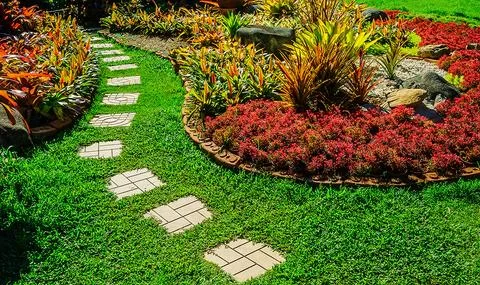
Creating a Pollinator-Friendly Lawn: Tips for a Sustainable Garden
If you're like me, you might have spent countless hours perfecting your lawn, ensuring it's lush, green, and free of weeds. But over the years, I've learned that a truly great lawn isn't just about looks—it's about fostering an environment that supports the creatures who help our gardens thrive. That's when I discovered the importance of creating a pollinator-friendly lawn.
Pollinators, like bees, butterflies, and hummingbirds, play a crucial role in our ecosystem. They help in the pollination process, which is vital for many plants, including crops that humans rely on for food. Sadly, many pollinator species are in decline due to habitat loss, pesticide use, and climate change. But we can help reverse this trend, right from our own yards! By making simple, intentional changes to our lawn and garden, we can create a haven for these essential creatures.
1. Choose the Right Plants for Pollinators
The first step in creating a pollinator-friendly lawn is to choose plants that attract these important creatures. I started by replacing some of my grass with flowering plants that are rich in nectar and pollen. Native plants are a great choice because they have evolved alongside local pollinators and provide the food and shelter they need. For example, I planted coneflowers, milkweed, and black-eyed Susans, all of which are favorites of bees and butterflies.
It’s important to keep in mind that different pollinators are attracted to different types of flowers. Bees love plants with large, open blooms, while butterflies prefer plants with clustered flowers like lantanas and butterfly bushes. Hummingbirds are drawn to tubular flowers like trumpet vines. By choosing a variety of plants with different bloom times, I’ve been able to provide a steady source of food for pollinators all year round.
2. Reduce Lawn Size and Replace Grass with Pollinator Habitats
One of the biggest changes I made to my lawn was reducing the amount of turf grass. While grass lawns are a common sight, they don't provide much for pollinators. I decided to replace parts of my lawn with meadows of native grasses, clovers, and wildflowers. These plants not only offer food for pollinators but also create a more resilient, drought-tolerant landscape.
By reducing the lawn’s size, I also reduced the need for water and fertilizers. The result? A beautiful, eco-friendly garden that benefits both me and the pollinators! My new lawn also requires less mowing, which means I spend less time working in the yard and more time enjoying its beauty.
3. Avoid Pesticides and Herbicides
Another critical step in creating a pollinator-friendly lawn is eliminating harmful chemicals. Pesticides and herbicides can be deadly for bees, butterflies, and other beneficial insects. I’ve made a personal commitment to avoid using any chemical treatments on my lawn. Instead, I use organic methods to control pests and weeds. For example, I’ve started mulching to suppress weeds and using neem oil as a natural pesticide to keep my plants healthy without harming the pollinators.
Additionally, I’ve found that by planting a variety of plants that naturally repel pests, I’m able to maintain a healthy lawn without relying on chemicals. Lavender, mint, and marigolds are excellent at keeping away common garden pests like aphids and mosquitoes, all while being safe for pollinators.
4. Provide Shelter and Water for Pollinators
Pollinators, like all creatures, need places to rest and hydrate. To provide shelter for bees, I added a few bee hotels near the edges of my garden. These small wooden boxes with drilled holes give solitary bees a place to nest. Butterflies also love to roost on tall plants, so I made sure to include plenty of shrubs and taller flowers where they can take cover from the wind and rain.
Providing water is just as important. Pollinators need fresh water to drink, especially in hot weather. I created a small, shallow water feature in my garden by using a birdbath. To make it even more accessible to bees and butterflies, I added stones in the water so they could safely land and sip without risking drowning. It’s fascinating to watch them come and go, especially during the summer months!
5. Educate and Inspire Others
Creating a pollinator-friendly lawn is a rewarding experience, but it doesn’t stop with just your own yard. I believe in the power of community, so I’ve started sharing my experiences with neighbors and friends. Whether it’s showing them how to plant a pollinator-friendly garden or discussing the importance of reducing pesticide use, I’ve found that people are often more willing to make a change when they understand how simple and beneficial it can be. After all, the more of us who take action, the greater impact we can have on the environment.
Through my journey, I’ve learned that every small change counts. By making my lawn a sanctuary for pollinators, I’m not only helping the environment, but I’m also creating a beautiful, diverse garden that brings joy to my family, friends, and, of course, the pollinators themselves. I encourage you to start your own pollinator-friendly lawn today—it’s easier than you think, and the benefits are immense!








